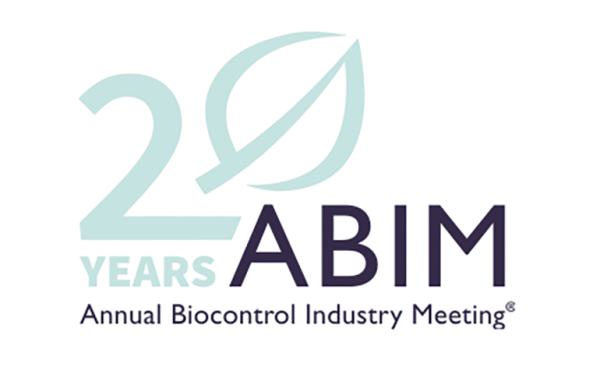Common Agricultural Pests: Identification, Damage, and Control Strategies
Why is it key to know common agricultural pests?
Agricultural pests are among the biggest threats to crop productivity, quality, and profitability. Early and accurate diagnosis allows for appropriate measures before damage reaches critical levels.
Additionally, detailed knowledge of pest behavior and life cycle helps schedule preventive actions and optimize resource use, reducing costs and preserving agroecosystem balance.
In sustainable or organic farming models, this information is even more valuable since chemical control options are limited and must be integrated coherently with alternative methods.
Types of pests in crops
Defoliators, sap suckers, miners, and nematodes
Defoliators: Lepidopteran larvae (cabbage worms, defoliating caterpillars) and coleopterans (bean beetles) consume leaf tissue, drastically reducing photosynthetic area.
Sap suckers: aphids, thrips, and whiteflies suck sap, transmit viruses, and cause deformities; their management requires constant attention due to high reproduction rates and resistance.
Miners: Diptera and Hymenoptera larvae tunnel inside leaves, limiting chloroplast function and weakening the plant from within.
Nematodes: Meloidogyne spp. and Pratylenchus spp. infect roots, causing galls and nodules that impair water and nutrient uptake, impacting overall vigor.
Characteristic symptoms and damage
Signs on leaves, stems, roots, and fruit
Leaves: chlorotic spots, perforations, curling, mosaic patterns, or powdery coatings (powdery mildew) indicate different types of attack.
Stems: subcortical tunnels, watery lesions, or abrasions suggest wood-boring insects or bacterial foci.
Roots: galls, rot, and lack of root hairs indicate nematodes or soil contamination.
Fruits: punctures, internal tunnels, and sunken spots compromise marketing and storage.
Preventive and cultural methods
- Crop rotation: alternating botanical families to disrupt pest cycles and reduce inoculum.
- Organic mulch: soil cover to prevent egg laying and limit soil pests.
- Adjusted sowing: advancing or delaying planting dates to avoid pest population peaks.
- Weed control: removing alternate hosts that sustain pests outside crop periods.
- Plant density: spacing plants to improve ventilation and reduce humidity, hindering pathogen development.
Biological control of common pests
Predators, parasitoids, and biopesticides
- Ladybugs (Coccinellidae): consume aphids and mealybugs.
- Lacewings (Chrysoperla spp.): larvae prey on aphids, thrips, and insect eggs.
- Predatory mites: Amblyseius swirskii and Phytoseiulus persimilis control spider mites and whiteflies.
- Parasitoids: Aphidius colemani and Encarsia formosa parasitize aphids and whiteflies.
- Entomopathogenic fungi: Beauveria bassiana and Metarhizium anisopliae infect and eliminate caterpillars and thrips.
Chemical control option: best practices
Selection of low-toxicity molecules and regulatory compliance
When pest pressure exceeds economic thresholds, natural-origin insecticides can be used:
- Bacillus thuringiensis: toxins specific to lepidopteran caterpillars.
- Azadirachtin (neem): repellent and antifeedant compounds.
- Spinosad: effective against lepidopterans and dipterans.
- Pyrethrins: natural origin with fast action and low persistence.
Respect safety intervals, recommended doses, and rotate modes of action to avoid resistance and protect beneficial fauna.
Practical cases in key crops
Examples in cereals, vegetables, and fruit trees
- Cereals: release of Aphidius spp. for aphids and mulching for nematodes.
- Vegetables: release of Amblyseius swirskii in tomato and use of Bacillus thuringiensis against caterpillars.
- Fruit trees: yellow sticky traps for fruit fly and release of Trichogramma spp. in peach orchards.
Conclusion and call to action
Accurate identification of common agricultural pests combined with preventive, biological, and low-toxicity chemical strategies is essential for effective integrated management. Download our detailed guide or contact our technical team for a personalized plan.
What are the most common agricultural pests?
The most frequent include aphids, lepidopteran caterpillars, thrips, whiteflies, spider mites, and root nematodes.
How can you detect a pest early in the crop?
Look for symptoms such as perforated leaves, chlorotic spots, tunnels in stems or roots, and visible insects or eggs.
What preventive methods can be applied?
Crop rotation, mulching, weed control, plant spacing, and planting outside pest peak periods are key actions.
What is biological pest control?
It involves using beneficial organisms (ladybugs, lacewings, predatory mites, and parasitoids) to reduce pest populations.
When is chemical control necessary?
Only when pest populations exceed economic thresholds and preventive and biological methods have been exhausted. Choose low-toxicity products like Bt, neem, or pyrethrins.
How to choose the appropriate control method?
It depends on the pest, crop stage, and environmental conditions: combine preventive, biological, and, if needed, selective chemical methods.
What benefits does integrated pest management offer?
It reduces chemical residues, prevents resistance, protects beneficial fauna, and maintains the ecological balance of the crop.
















